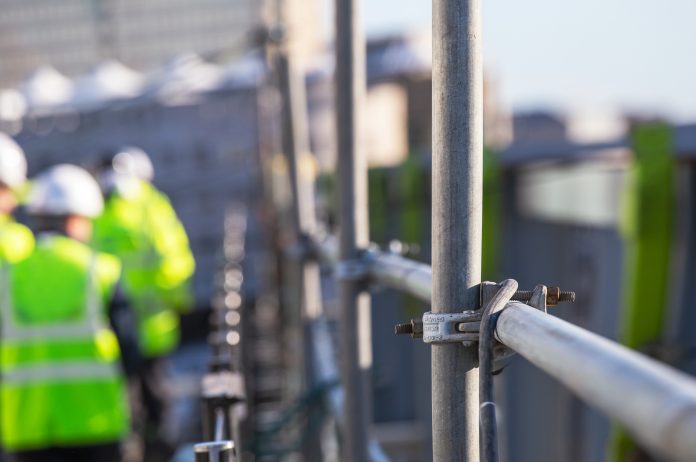The latest ONS figures on construction show a decrease of 1.7% in monthly output, attributed to economic uncertainty increasing customer hesitancy and general delays
The latest ONS figures on construction output have revealed a drop of monthly output by 1.7%- the weakest monthly growth since June 2022 (negative 2.0%) and the lowest monthly value in level terms (£14,841m) since February 2022 (£14,719m).
Anecdotal feedback noted the mixed impact of heavy rainfall in early January, which negatively impacted outdoor work but created more opportunities for repair and maintenance work, which rose by 2% on the month.
New work decreased by 4%.
Volitility in the economy continues to impede construction
Inflation and high-interest rates were some of the reasons identified for delays, cancellations, and less work requested by customers.
These factors have particularly contributed to an ongoing work slowdown in the housing sector.
Breaking down the construction output drop at a sector level
Five out of the nine sectors saw a fall in January 2023, with the main contributors to the monthly decrease seen in infrastructure new work and private new housing, which decreased 6.5% and 3.0%, respectively.
Alongside the monthly decrease, construction output saw a decrease of 0.7% in the three months to January 2023; this follows four periods of consecutive growth in the three-month-on-three-month series; the decrease came solely from a fall in new work (1.2% fall), as repair and maintenance saw an increase (0.3%).
Industry voices are generally optimistic
Fraser Johns, finance director at Beard Construction said: “The new year certainly didn’t offer the new start many in construction would have hoped for with a decrease in output in January and a fall in new work. This is driven by continued economic uncertainty and higher borrowing costs contributing to some clients holding back on their commitment to larger projects.
“There was, however, an uptick in repairs and maintenance works; thus, despite clients feeling less inclined to pull the trigger on high-value blockbuster jobs, there will be those still pushing ahead with improving and maintaining current stock. To combat a volatile and uncertain landscape, businesses must remain flexible and raise their profile in the markets that will be strongest in the next 12-18 months.
“While this snapshot of January shows the challenging start to the year for many of the industry’s key sectors, businesses will be encouraged by a much stronger February. Some areas still continued to show weaknesses, especially the housing sector, but a lessening of supply chain pressures and recessionary fears helped to boost both new orders and overall confidence.
“However, this shows the somewhat ‘hot and cold’ nature of the sector, which is driven by uncertainty in such difficult times. Staying close to suppliers and stakeholders will remain a key priority, as well as being able to adapt to changing market conditions and project demands.”
There is some concern about client demand and labour supply
Clive Docwra, managing director of property and construction consultancy McBains, said on the construction output drop:
“Today’s figures are proof that the cloud of economic uncertainty is still impacting construction output levels – and across the majority of work areas.
“Falling client demand is now severely affecting private housebuilding, while a fall in new orders across all work sectors will set alarm bells ringing. Infrastructure also saw a decrease of 6.5% in terms of new work – a particular worry as this sector has propped up the industry’s performance over the last few months.
“The industry is also hamstrung by skills shortages, and reports suggest the government may make changes after next week’s Budget to the points-based immigration system to allow construction to recruit more foreign workers. This would be welcomed, as fewer EU nationals and the withdrawal of older workers from the labour market have shrunk the industry workforce, with the number of vacancies at the end of 2022 standing at 46,000 – almost double pre-pandemic levels.
“However, we also need client demand to be there – and today’s figures show that to be a concern.”
The upcoming budget may provide some hope
Mark Robinson, group chief executive at SCAPE, one of the UK’s leading public sector procurement authorities, said:
“It’s unfortunate to see a dip in output after a resilient end to 2022 capped off a year of growth. But it indicates the uncertainty in the economy at the moment, and it’s difficult to know if growth will return soon.
“The industry will be looking to next week’s Budget for a steer on the government’s intentions and how this might affect workloads. While a public sector spending spree looks unlikely, with local authorities being told to keep the purse strings tight, firms might be left hopeful by the recent news on enhanced tax receipts and underspending in various government departments. This gives the Chancellor headroom, and contractors renewed optimism.”
Dave Sheridan, executive chairman at ilke Homes, said:
“Today’s data indicates the economic headwinds construction is facing, with the cost-of-living continuing to hit consumers’ pockets and higher-than-usual mortgage rates deterring new home buyers. As the Budget approaches, the Government must now focus on ensuring that the sector can get on with building the infrastructure the country so dearly needs, which includes housing. Ministers are right to consider the Migration Advisory Committee’s recommendation that construction workers should be added to the ‘shortage occupation list’, because the industry is going to need 216,000 new workers by 2025.”














